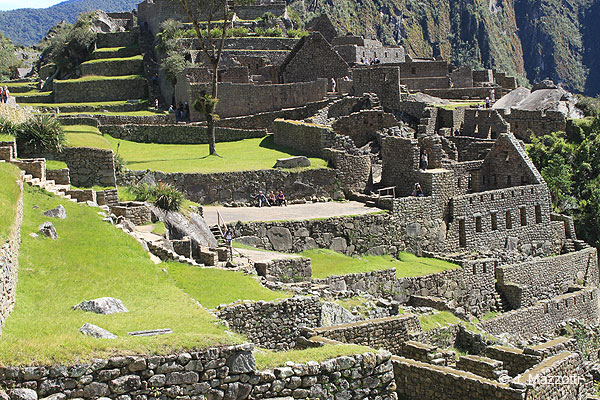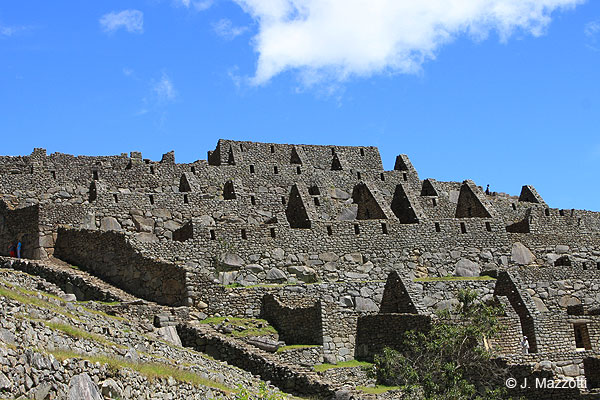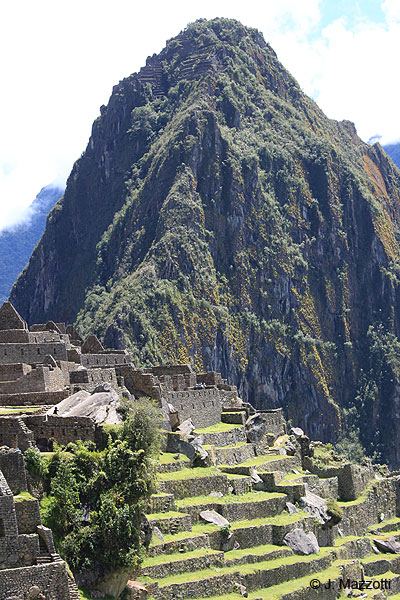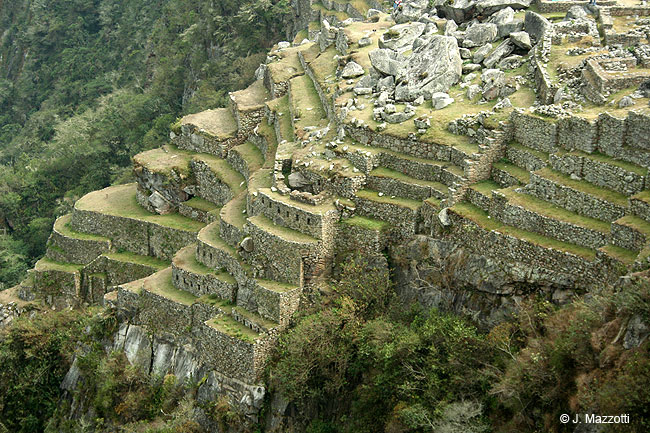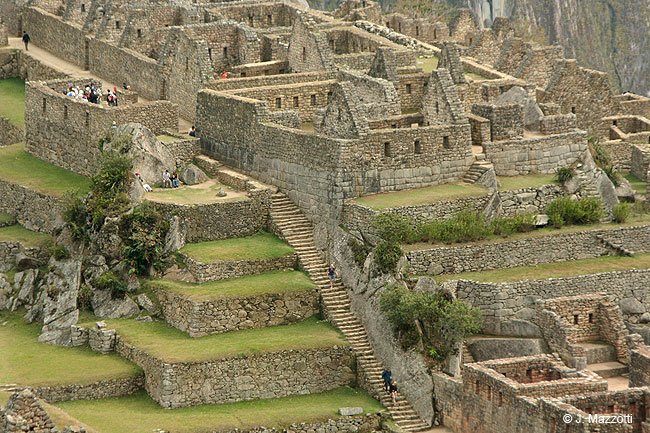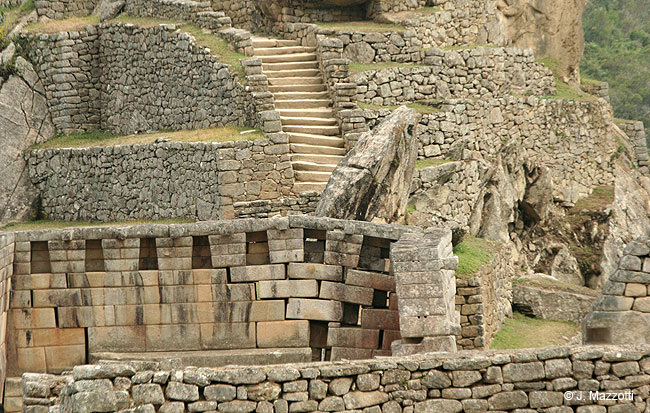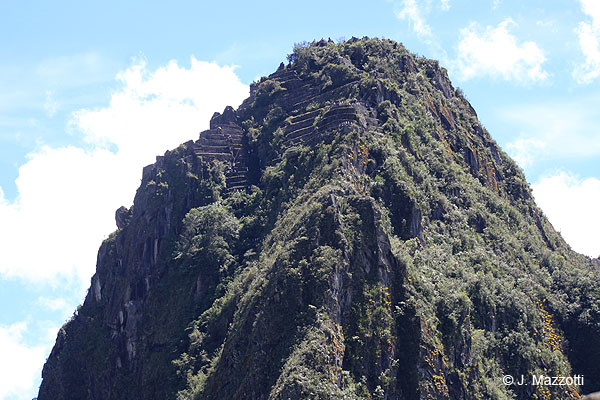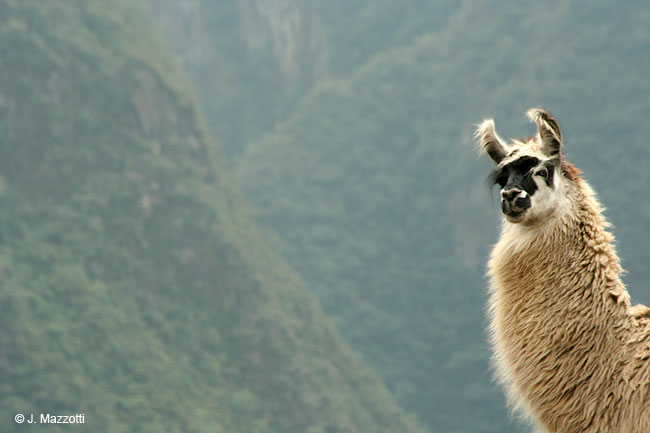Machu Picchu Inca City

 The Machu Picchu Inca city, the Holy City of the Incas, is nestled into the top of the Inca hill, in an spectacular location, is considered one of the seven New Wonders of the World.
The Machu Picchu Inca city, the Holy City of the Incas, is nestled into the top of the Inca hill, in an spectacular location, is considered one of the seven New Wonders of the World.
Machu Picchu was never mentioned in any of the chronicles of the Spanish conquerors.
It is a mystical place, a monument to divinity, where people can feel that they are a creation of God. The high sense of spirituality that inhabits this place seems to transport its visitors to a place where everything "in an unimaginable way" is possible. It is a place where strange forces of nature allow the individuals to reach an incomparable cosmic state, a state that can only be experimented in Machu Picchu.
Peru is known all over the world for Cusco and Cusco for Machu Picchu. Because of its incomparable beauty, its harmonious landscape and the spiritual strength it transmits, this Inca citadel has the privilege of making part of that chosen group of world class monuments that millions of people in the five continents dream of visiting.
Machu Picchu from the air
Machu Picchu: The Lost City of the Incas - Archaeological Site
In July 1911, an American scientific expedition led by Hiram Bingham arrived at the Urubamba river canyon, a warm and humid region of large vegetation. The majesty of a landscape combining distant glaciers and gigantic ravines that poured their waters into the quiet river amazed the expeditioners. Bingham was obsessed with discovering Tampu-Tocco, the mythical city of the first Incas reported by some chronicles. On July 24, after a difficult ascent to the mountain known by the place’s inhabitants as Machu Picchu (2,350 m.a.s.l.), Bingham discovered among the vegetation an extraordinary compound of ruins. The explorer thought he had found the lost capital of the Incas, without imagining that instead of solving a mystery he was unearthing another one that would last throughout the twentieth century.
If that citadel with buildings as gorgeous as the most beautiful ones in Cusco was not Tampu Tocco, what was it, then? Why did the chronicles fail to write about this marvel of Inca architecture? The powerlessness of science to answer these questions made the mystery grow even more and the most imaginative theories were proposed.
The territories where Machu Picchu is located were conquered by Inca Pachacútec, the ruler who had the merit of converting the small Inca kingdom, which did not reach much beyond Cusco, into a vast and powerful empire. Pachacútec ordered the construction of Machu Picchu as proof of his military exploits. Moreover, he had done likewise before when, younger, he conquered Pisac and Ollantaytambo. Subsequently, remarkable Inca buildings were built there.
Pachacútec lived in the memory of his people not only as a wary conqueror, but also as a great constructor and as the ruler that reformed religion and organized the official ritual to their minutest details. This argument supports the theory that Machu Picchu was a place its creator deemed appropriate for the adoration of imperial gods.
In fact, beside the finely finished buildings, suitable for the residence of a ruler, there are many others presumably destined to religious functions. The place’s topography was characterized by rocky cone-shaped peaks, caverns, snow capped mountains. It is located at a tight curve of an impressive canyon combining essential features for a religion that focuses on the relationship between man and nature.
Pachacútec likely visited the citadel of Machu Picchu sporadically. Apparently several families of royal lineage lived there, as well as priests and priestesses that adored the sun, the snowed capped mountains (apus) and natural phenomena. The site’s dwellers did not exceed one or two thousand in number and lived off what was grown in the terraces surrounding the citadel and on the slopes of neighboring mountains, like Wiñay Wayna. When the Spanish conquest came about, a sacred place, which could only exist as part of a highly organized State, lost its reason for being. Not only the victorious gods had changed, but also the farmers and servants that fed the priests, who came from very far away lands, as it was usual in the Inca empire, felt the moment had arrived for them to return to their places of origin. On the other hand, it was natural for conquerors not to value a place like Machu Picchu: the Inca agricultural compounds, a prodigy of agricultural science and hydraulic engineering,interest them only as they felt safe, or close to large tribute-paying populations. Thus, the sanctuary was swallowed by plants and oblivion which, paradoxically, permitted its conservation to present.
Considered one of the world’s most extraordinary landscaping works, Machu Picchu looks down the summit of a mountain overlooking the deep Urubamba river canyon, in the middle of tropical forests. It is comprised of two large areas: an agricultural one and an urban one. The first is basically formed by five groups of terraces irrigated with waters descending through canals and ponds. It also has food warehouses and lodging for the farmers. The second comprises the sacred area, with temples, squares and royal mausoleums carved to exquisite perfection, like the Temple of the Three Windows, which commerates the mythical origins ofInca founders coming out of the three sacred cavern of Paqarictambo. Notable among adoration places, are rocky outcrops and carved stones, usually called intiwatanas, which have astronomic and religious functions. A sacred stone, characteristic of important Inca centers, sits in the main square. The set is completed with priest’s houses, hostels for pilgrims and tombs. The stairways, streets, hallways and carved stone canals can be seen everywhere in this archeological site right across from the spectacular Huayna Picchu mountain that may be reached up a steep stone-paved road.
Machu Picchu was interconnected with the entire Inca empire through the Qhapaq Ñan, the network of Inca roads, which can still be walked to this day (Inca Trail). However, access to the city was previously prohibited by rural communities and local inhabitants, as its location was a state secret, protected by the deep ravines and wild mountains.
One of the best ways of starting the walk is at dawn in order to fill oneself with the site's energy. For the best panoramic views of the complex, tourists can climb the Wayna Picchu and Machu Picchu mountains, or also take in the sight from Intipunku. After the hike, visitors can relax in the Aguas Calientes hot springs, in Machu Picchu town.
Machu Picchu World Heritage Site
Since 1981 is part of the Historic Sanctuary of Machu Picchu as well as World Natural and Cultural Heritage Site by UNESCO (1983) because of its archaeological importance as well as its unique flora such as the orchids that you may find aplenty.
By far, Machu Picchu is the most important tourist attraction in Peru. It is located three hours by train from Cusco, although it can also be reached by foot (4 days down the Inca Trail). Only permitted the admission of 1500 visitors per day.
Travel Information - Machu Picchu Inca City
The Machu Picchu Inca City is 6 kilometers (3.7 mi) away, about 1.5 hours walking from Machu Picchu Town. All travelers to and from Machu Picchu archaeological site must pass through Machu Picchu Town.
The minimum recommended time to visit and trip to Machu Picchu is one day (from Cusco) or 4 days if you make the Inca Trail trek.
Buses to Machu Picchu Inca City
There are transfer buses to the Machu Picchu Inca City from Machu Picchu Town, leaving every 15 minutes from 05:30 am onwards. This is the frequency until 3:00 pm, and return buses leaving the Sanctuary start running at 6:30 am with the last one returning at 5:45 pm. Journey time is approximately 25 minutes.
Entrance Ticket to Machu Picchu Inca City
Entrance tickets and the bus tickets must be purchased in Machu Picchu Town.
No entrance tickets for any of the hikes are sold at the access checkpoint. Visitors cannot enter the Huayna Picchu zone without the correct ticket. The maximum capacity of visitors is 400 per day, divided into two groups of 200 people according the times indicated.






